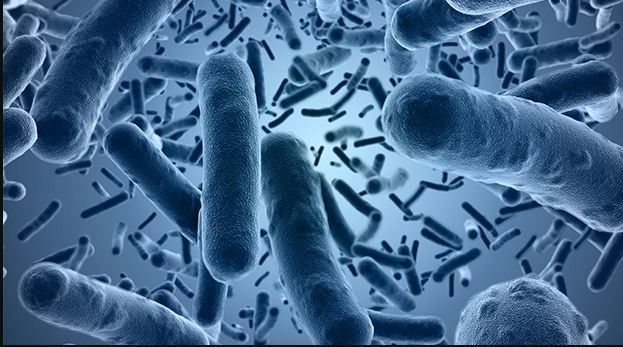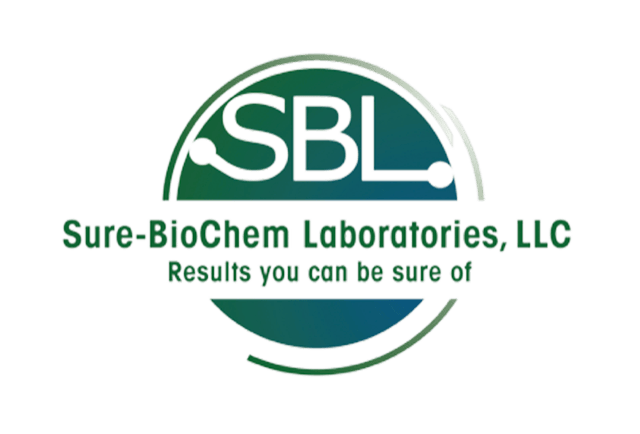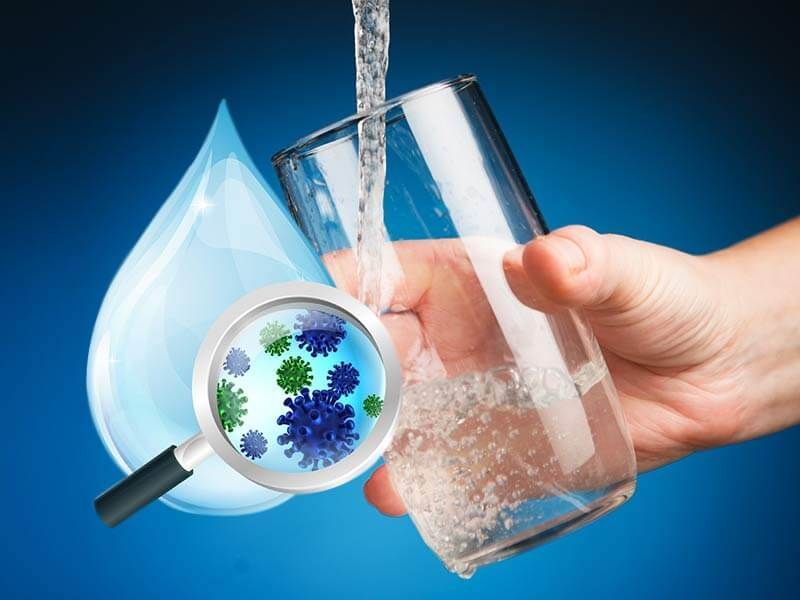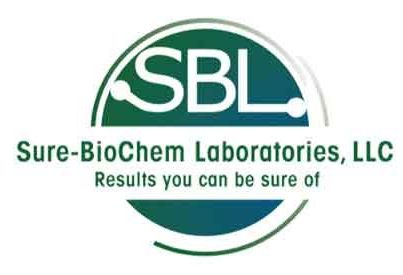The Expert Microbial Contamination Testing Guide
Microorganisms are Both Complicated and Beneficial

We share our world with a host of invisible microorganisms, and our relationship is complicated. Some microorganisms are beneficial to our health, while others can lead to contamination, sickness, and even death. Your company’s greatest defense against harmful pathogens is frequent, consistent microbial contamination testing.
Microbiological testing is a must for any industry wherebiological pathogens could compromise human health. An effective microbiological testing plan will help you swiftly identify contaminants before they causeo irreparable harm to your consumers and your brand integrity.
This guide answers the question: what is microbial contamination testing? We’re here to help you assess your company’s testing needs and find the right testing laboratory to aid with your
microbiological analysis strategy .
What is Microbial Contamination?
Microbial contamination is the presence of any unwanted microbes in a material. These microscopic invaders include
bacteria, fungi, viruses, yeasts, and protozoan . If contamination occurs, it’s important to identify the offending microbe’s classification. For example, microbiological testing of water could identify Hepatitis A in the public water supply. A lab test for food products could discover a strain of E.coli before the food hits the shelf. This testing data can help you identify the source of the contamination and any inefficiencies in your production chain.
Microbial Testing Defined
What is microbiological testing? Microbial testing methods use biological, biochemical, molecular, or chemical methods to detect or identify microorganisms in a given sample. The depth of your company’s microbiological testing can range from an at-home microbial test kit purchased on Amazon, to extensive analysis performed by a professional testing laboratory.
While microbiological testing can not guarantee 100% product safety, it is a vital part of any company’s environmental monitoring plan. For example, microbial testing is a critical principle in a food production company’s
Hazard Analysis Critical Control Point (HACCP) Plan , an internationally recognized system to manage food safety.
The microbial testing methods you require are specific to your company’s needs. Depending on your industry, you may need
microbial monitoring to meet desired standards along your production chain, identify risk factors, or comply with industry guidelines and mandates.
Most common examples for needing microbial contamination testing
In reality, everyone can benefit from knowing which microorganisms exist in their living and working space. The type and frequency of microbiological testing you require depends on your industry, your risk factors, and if you are bound to government regulations.
Here is where we most often see a need for microbial contamination testing:
- Laboratories and cleanrooms
- Medical facilities
- Microbial contamination testing in pharmaceuticals
- Cosmetics
- Facilities with close living quarters such as healthcare facilities and prisons
- The entire food supply chain from food production companies to restaurants
- Microbiological testing of water
If you’ve determined that your company needs to implement microbial contamination testing, remember that testing should be performed on raw materials, intermediate phases of production, and the finished product. Contact Sure-BioChem Laboratories today to
request a microbial testing quote .
What is microbial limits testing?
Microbial limits testing is a comprehensive look at all of the microorganisms that exist within a product.
There are two parts to this testing:
- Total number of aerobic organisms (including yeast and mold)
- Detection of specific unwanted organisms
Microbial limits testing keeps products in compliance with
USP 61 and
USP 62 testing procedures.

Top Microbial Testing Methods
When testing for microbial contamination, laboratory technicians work with samples of the product. There are two types of microbiological sampling techniques: destructive and non-destructive. Destructive sampling either destroys or changes the material in such a way that it is no longer fit for service. For example, sample egg products will be compromised after a chemical analysis to detect the presence of Salmonella. Regardless of the microbiological sampling technique that is utilized, sampling is most effective when performed frequently and over multiple sites and time points.
Once samples have been collected, the company follows the chain of custody to submit samples to the testing laboratory. Sure-BioChem Laboratories makes the chain of custody a simple process for your company. Finally, expert laboratory technicians utilize a variety of microbial testing methods such as culture media, immunoassay, and polymerase chain reaction to detect the presence of target microorganisms.
Culture Media
Microbiologists have been using culture media since the
1800 s. This microbial testing method utilizes a special medium composed of different nutrients that encourage microbial growth. Laboratory technicians can then identify, quantify, and differentiate the microorganisms growing in the media.
Laboratories utilize two main types of culture media:
- Liquid culture media ( “broth”)
- Solid or semi-solid culture media (“agar”)
Depending on the specific applications of the microbial contamination testing, it can take anywhere from twelve hours to more than a week to attain results from culture media testing.
Immunoassay
Immunoassays detect specific molecules by using antibodies to bind to the unique structure of a molecule. Antibodies are the proteins our bodies create in order to fight off foregin molecules, or antigens, in our bodies. The antibodies are highly specific, and will only bind to their target molecule. In the case of microbial contamination testing, the target is the pathogen.
Immunoassays typically yield results in 24-48 hours.
Polymerase Chain Reaction (PCR)
PCR tests use DNA sequences to identify unwanted microorganisms. By repeatedly raising and lowering the temperature of a sample, this technique can produce billions of copies of a DNA sequence. The PCR test then recognizes the DNA unique to the target microorganism.
PCR test results can be generated in as little as a few hours to up to 48 hours.
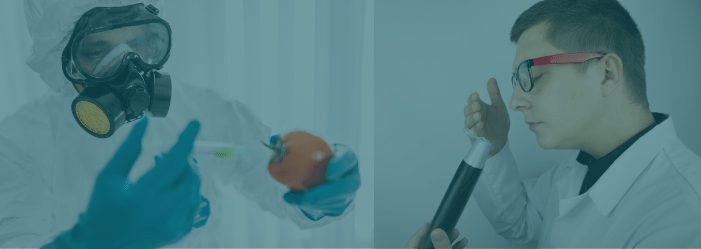
Most Popular Industries that use Microbial Contamination Testing
If you are wondering if your company should include microbial contamination testing as a part of its safety and quality assurance plan, the answer is probably yes. Any industry that has products, employees, or consumers that could be compromised by harmful microorganisms should have a plan in place for frequent and consistent microbiological testing. This means testing throughout the research, development, manufacturing, and processing phases of development. The time and resources you put into microbial contamination testing will protect your assets and reputation in the long term.
Sure-BioChem Laboratories serves a variety of industries and lab testing type, includings
pharmaceuticals,
food and beverages,
biopharmaceuticals,
cosmetics, chemicals,
manufacturing, and
government.
Microbial contamination test in pharmaceuticals
Microbial contamination testing in pharmaceuticals has a place in every facet of the supply chain: research and development, manufacturing, and putting the final product to market. This is designed to ensure the safety of patients, especially those who are already at risk and more highly susceptible to infection.
Since the pharmaceutical industry requires approval from the Food and Drug Administration (FDA), microbiological testing is a mandate. The FDA ensures that pharmaceutical companies follow
United States Pharmacopeia (USP) standards for the identity, quality, purity, strength, packaging and labeling of drug products. In order to achieve these standards, microbiological testing must be conducted on raw materials, finished products and
non-sterile products .
Food & beverages
According to the latest estimates published by the
CDC , 48 million people get sick, 128,000 are hospitalized, and 3,000 die from foodborne diseases annually in the United States. Microbial contamination happens when a food has been contaminated by microorganisms, including bacteria, viruses, mold, fungi, and toxins. Food contamination and recalls pose a threat to consumer health and safety as well as to the food company’s profits and reputation.
However, food companies can take a responsible, proactive stance against this silent menace. In order to meet FDA standards and ensure the health of consumers, food production companies must carry out frequent, random lab tests for food products all along the supply chain.
BioPharmaceuticals
Biopharmaceuticals are complex medicines made from living organisms. They are produced using innovative biotechnology. Biopharmaceutical products include insulin, human growth hormone, and certain vaccines.
Since biopharmaceuticals are often intended for ill populations, it's especially important to carry out consistent, reliable microbial contamination testing to ensure the integrity of the product. Biopharmaceutical facilities must adhere to current
Good Manufacturing Practice regulations for manufacturing, processing, and packaging biopharmaceutical products.
Cosmetics
Cosmetics do not require
FDA approval , but companies are legally responsible for making sure their product is safe (10). This includes microbiological safety.
Cosmetics can become contaminated when raw materials are contaminated, manufacturing conditions are unsanitary, or packaging does not protect the product. Frequent microbiological testing at each stage of production is the best way to ensure consumer safety.
Chemicals
Chemicals production is the basis for most of the manufactured products we use every day. Pharmaceuticals, construction materials, pesticides, and green energy are just some of the industries that rely on chemical quality. Microbial contamination testing ensures that microorganisms do not compromise the quality of the chemicals.
Manufacturing
The manufacturing industry is a large umbrella covering any company that produces finished products. This is the end of the production chain, and microbial contamination testing is just as important here as it is in the raw materials stage.
Manufacturers that require microbial contamination testing include textiles, consumer electronics, and fuel. Here are just a few ways that microbiological testing protects these companies’ products and consumers:
- Textiles are tested to determine their susceptibility to mildew and rot.
- Electronics for HVAC systems and medical devices are tested to ensure they do not support bacterial growth.
- Fuel is tested for microbes that will digest and degrade the fuel over time.
Government
Government agencies are at the forefront of research, development, and technology in a variety of fields including military, healthcare, and aerospace. Whether the agency is overseeing the production of a life-saving vaccine or developing new weapons technology,
government testing services are necessary to make sure the product is safe before it’s released.
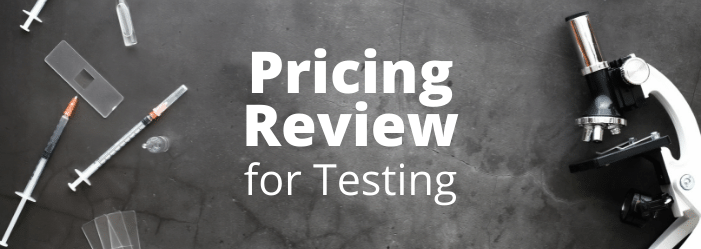
Pricing Review for Microbial Contamination Testing
It’s important to work microbial testing costs into your company's budget. Plan for regular testing, but remember that testing does not give you a 100% guarantee on product safety. You may incur extra microbial testing costs if you experience an unforeseen contamination emergency.
How much does microbial testing cost?
Lab tests for food products can cost anywhere from $100 for basic microbial analysis to over $2000 for a more complex
microbiological analysis strategy . A testing laboratory may set a price per individual test, or they may bundle related testing services. While the testing laboratory will serve as your expert in microbial testing methods and procedures, they will only perform the tests you ask for. Be sure to clearly communicate the specific applications you need in order to meet your company’s standards as well as any necessary industry mandates.
Important things to consider when choosing a testing lab
Partnering with a third-party testing laboratory is an efficient and cost-effective way for your company to meet its microbial contamination testing needs. An in-house testing laboratory requires significant space, equipment, and specially trained personnel, and that’s just not a reality for many small companies.
Selecting the right testing laboratory has long term cost benefits and will afford you peace of mind. It’s worth it to do your homework.
Here is a list questions to consider as you interview testing laboratories :
- Does the laboratory have ISO/IEC 17025 accreditation , an internationally recognized accreditation standard?
- Can the laboratory show that the microbial testing method is properly validated?
- Are personnel qualified?
- Does the laboratory have the proper equipment and materials for the lab testing types you require?
- What microbiological sampling techniques does the laboratory use?
- What are the shipping and handling costs for samples?
- What is the turn turnaround time for test results?
Your company is ultimately responsible for the testing you request. Clear, consistent communication is the key to a successful partnership with your testing laboratory.
Now You're Ready to Select a Reliable Testing Lab
The best way for any industry to reduce the risk of contamination, product recall, and consumer harm is to execute a thorough microbial contamination testing plan.
By making room in your budget and in your day-to-day operations for a third-party testing laboratory, you set your brand up for long term success.
After reading this guide, you're equipped to pick a high-quality microbiological testing laboratory with reliable testing to help you improve your research and expedite your production.
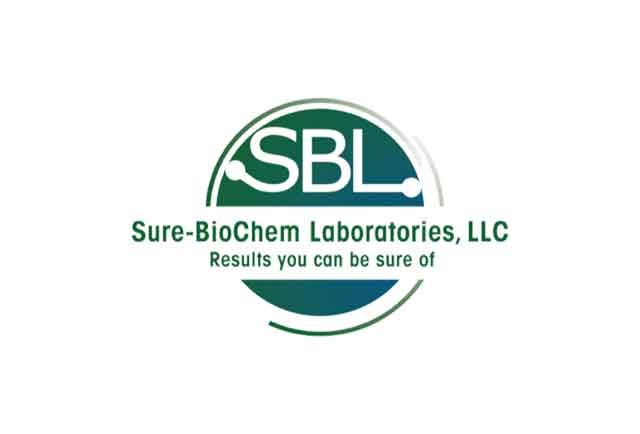
Need Our Help? Fill Out a Service Request Today!
We're here to assist you with all your needs. Please complete our service request form to ensure we provide the best possible service.
It's quick and easy—tell us a little about your request, and our team will reply promptly. We look forward to serving you!
Blog Contact Page
